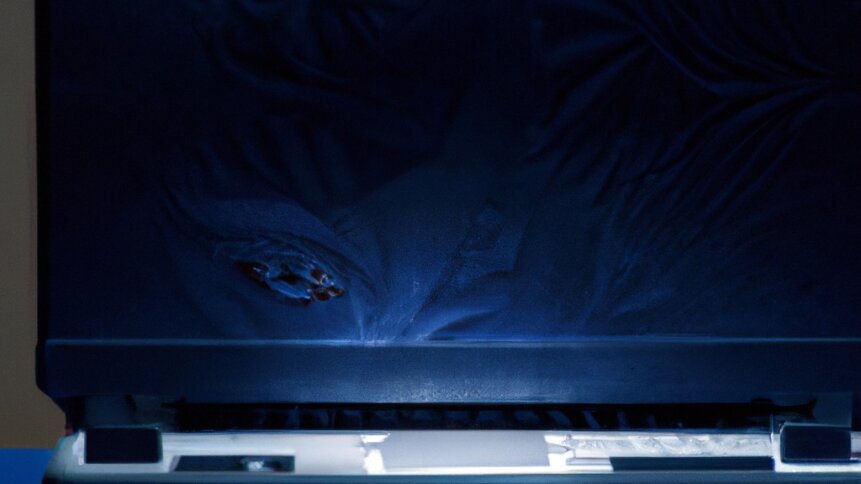Hybrid work means managing teams remotely shouldn’t be invasive

If you have to ask why managing teams remotely shouldn’t be invasive, there’s a chance you may not have understood the full implications of the word “invasive.” Invasions are more or less never good, whether they’re of privacy, personal space, homes, or nations – although the US remains one of the only countries left in the world that tells the story of its historical invasion by white Europeans as though it were a magical fairy story of hope and freedom. Invasive management goes against practically every definition of what hybrid work means, and if you do it, and are discovered to do it, you’ve broken the bond of managerial trust with the employees you do it to.
Forever.
Invasive tools for managing remote workers surged in popularity during the Covid pandemic – in line with the rise in the numbers of people working from home. Software to invasively monitor the activity of remote workers was favored by employers as a way of ensuring staff didn’t “take advantage” of working from their home or other environments.
It was deployed to counter the fear that staff would indulge in leisure activities on company time, or to use company property (usually the laptop on which these spyware programs were installed) for unsanctioned activities, like, Heaven forbid, Youtube breaks to refresh or inspire the mind. But if it means anything, Hybrid work means a readjustment of the work-life balance that still gets the work done, but isn’t – or shouldn’t be – subject to rigid and perpetual time management monitoring.
The original reason.
Before we demolish utterly the use of these electronic tattle-tales, let’s acknowledge one thing. They were not made by fundamentally nasty human beings, out to trip up hapless staff who were confined to barracks. They also weren’t initially deployed by managers with the intention of unduly spying on their remote staff. In the beginning of the pandemic, there was, arguably, a good and healthy reason to deploy them.
Everybody was thrown into a new and scary situation – companies feared for their continued existence, workers feared for their continued paychecks, not to mention their continued lives. And working from home had always been an oddity, a perk that usually came with a lower paycheck to penalize remote workers for what was always seen – perhaps rightly, as it turns out – as an “easier” way to tackle a job.
No travel to and from the office (with its inherent costs), no money going into a canteen or refectory, etc – if you worked from home, you had it “easy” compared to those who worked in the office, and so you frequently took a pay cut for the “privilege” of working from home.
Suddenly having at least the majority of their workforce working from home was a logistical nightmare for companies, which feared deadlines would become too flexible, that staff being in their own home environments would disregard their work and treat workdays like paid holiday, watching movies on company time, or homeschooling their children, and so pushing the already-strained budgets of the company into freefall.
The home working adjustment.
And similarly, workers who had never worked from home, and were suddenly having to do it while a global pandemic raged, while they were either more isolated and pleasure-starved than they’d ever been, while they were traumatized by the specter of death affecting their friends and family, or while they found themselves having to add to their own workload with the workload of unpaid teachers, all within the same amount of time they usually used to do their day job, had a genuine adjustment to make.
They had to shift gears to fit everything in, all while unexpectedly sitting in their own home environment, rather than the office environment. And many workers took quite some time to adjust to the reality of working from home – a reality that included establishing a daily work discipline within a home environment, and often rearranging whatever space was available to create a home workspace, slightly separated from the rest of the domestic environment, so as to promote and encourage that discipline and focus.
Invasive remote work monitors then did – at least initially – have a valid purpose. They were meant to enforce discipline and maintain workflow, in a world that was, in some respects, falling to pieces.
But their adoption was driven more by fear than by good business sense. And that was at the start of the pandemic.
That was then.
This is now.
The situation has changed radically – so still using invasive tools to manage remote workers in 2023 is a marker of management failure, and a marker of a pandemic fear atrophied into common practice through a failure or refusal to move with the times.
Why not to use invasive remote worker management tools.
End of the trial period.
First, let’s deal with the fact that enough time has now passed to make remote and home working a part of the new normal. Whether or not a company used invasive monitoring techniques at the start of the pandemic, their trial period has long come to an end. If your remote workers are still not delivering on their deadlines three years on, that’s either a staff failure or a management failure – as much as it would be were the staff located in the office.
Any emergency productivity tracking measure installed in extreme circumstances should, as a matter of both business and decency, be removed when either the extreme circumstances come to an end, or the need to measure productivity is consistently disproven by the delivery of expected results. If you’re still using invasive remote worker management tools in 2023, there’s more wrong with your manager-staff relationship than any invasive tracker can solve for you.
On top of which, if your remote staff are still not delivering the work they should, three years on from the first lockdowns, then clearly the invasive measures have been a colossal failure in their intended consequences, and you’re potentially still paying for a software or a service that’s clearly not fit for purpose.
Failure of communication.
Remote work depends not only on technology and flexibility, but on trust between managers and the managed. That in turn depends on clear and honest communication, both of what’s expected over any given period, and also in return, of what’s been achieved over that period, and the reasons for any shortfalls – so that any potential blocks to progress can be smoothed, removed, or negotiated, so that work can continue.
Hybrid work means trusting in the talent for which remote workers were originally hired, and which they may well have demonstrated over long years or even decades. Invasively monitoring them outside of a time of adjustment to crisis makes a mockery of that relationship of trust.
And of course, if staff discover they’ve been prone to invasive monitoring – whether you tell them overtly that you’re monitoring them, or they discover it for themselves – that announces your inherent distrust of them, which will fundamentally change the relationship between staff and managers for the rest of their time at your company.
It may even leave you trying to fill their position when they leave ahead of time, because no-one wants to feel like their bosses don’t trust them to do the job – even if there’s reason not to trust them.
The way you deal with staff who seem to be taking liberties with the freedoms of home working should be through collaboration and the clarity and honesty of your manager-staff relationship, rather than with invasive technology that snoops on them and immediately signals a dysfunctional, distrusting management.
It doesn’t work.
It’s also worth mentioning that in many cases, invasive monitoring of remote workers simply doesn’t work. If companies send a laptop full of spyware to their remote workers, and their remote workers happen to have a personal laptop standing by, the likelihood is that staff will use their own machine – partially because it’s comfortable, and therefore significantly faster when it comes to delivering results, but also specifically to avoid being in the position of being invasively monitored.
What’s more, certainly within the tech sector, many remote staff will either be able to find other ways of neutralizing the effect of invasive productivity trackers – or they’ll know someone who can.
It really doesn’t work.
And while the purpose of invasive monitoring was initially to maximize productivity, studies have shown that if you hang a digital sword of Damocles over your remote workers’ heads, and if they either know it or discover it, you have a workforce that is operating under broken trust, a sense of betrayal, and an increasing fear of consequences for missing expected KPIs.
That can lead to a reduction in productivity, as there’s no trust-based or growth-based reason to expect reward for going above and beyond. It can also, on the flip side of the coin, lead to dissatisfaction, job-hunting to find other roles that don’t continue to use pandemic-appropriate technology long beyond lockdown, burnout as staff try to demonstrate their productivity levels, and ultimately a loss of staff, either to that burnout, or through your actions to negatively motivate your staff to go and work for somebody else.
If hybrid work means anything, it means getting the best of both worlds. Using invasive monitoring tools and techniques on your remote staff delivers the worst of both worlds to everyone. It only engenders mistrust, makes your staff feel like they’re just robots in your operation, and motivates them either to burnout or to leave you.
There’s no logical reason why the talent of your remote staff should still be under the lash of these invisible whips. It’s not good for them, it’s not good for you, and it’s ultimately bad for your business, too.










